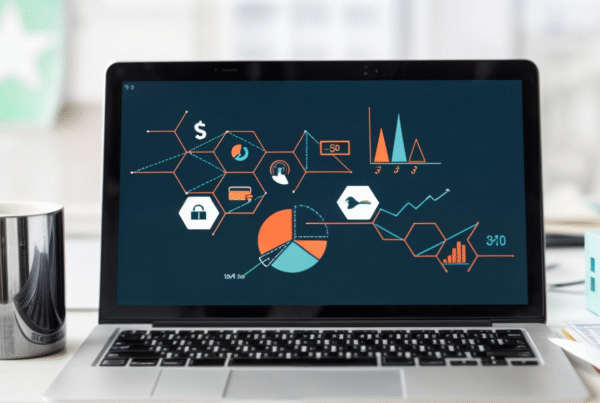The Heart of Property Management – It’s All About People and Technology
Property management is fundamentally about people. To succeed, you have to nurture strong relationships, not just with owners and residents, but also with the vendors, contractors, and team members you work with every day.
To really focus on those important relationships, you’ll need an efficient way to handle all the nuts and bolts of the business—from paperwork and accounting to applicant screenings and property inspections. That’s where technology comes in.
The past few years have seen an almost overwhelming number of digital tools grow in popularity, each promising faster and smarter solutions to help you manage your business. We’ve put together this guide to help you sift through your options to find the technology that actually solves your specific challenges, saves you money, and frees up time for you to focus on what matters.
Next:
dive into how to approach choosing property management software that fits your unique needs.
Leveraging Leasing Technology for Property Management Success
Content:
Now, let’s take a closer look at the different types of property management software and how each can help your business.
Leasing Technology
Attracting and retaining residents is a top priority for most property managers. Finding tenants that will stick with you for the long term can be difficult, but technology has emerged over the past few years to make the search easier. The COVID pandemic and remote work has sparked a demand for new technology at each stage of the leasing process.
Marketing and Listing
You’ve put time to create an attractive rental listing and you’ll want to get it in front of the right renters. That means posting your listing on a variety of the leading listing sites such as Redfin, Zumper, Apartments.com, Apartment List, and the Zillow Rental Network. To know which to focus on, here’s the lowdown on the 7 best rental listing sites for property managers.
Listing syndication tools like Tenant Turner can help speed up the process by posting each of your listings across the sites of your choice at the same time. The best of these tools save previous information you entered in case you need to relist a unit, but still let you change whatever details you like, such as the point of contact for a listing.
Showings
After finding your property, the next step for many residents is booking a showing. The same tools you used for syndicating listings should let you track any requests and schedule showings, as well. No matter which particular site renters found your listing and requested a showing on, you should be able to manage everything on one platform.
By this point, renters should already have a good idea of what to expect from your property through an effective listing that includes virtual tours. As you probably know, virtual showings have become commonplace—and even preferred by some renters. In fact, 90 percent of respondents in a Zumper survey said they’d be more interested in a listing that offers a 3D virtual tour than one that doesn’t.
ShowingHero is an example of software that combines these self-tour options with more comprehensive showing management, acting as a virtual assistant, fielding requests from renters and scheduling appointments for you.
Applications
Once renters have seen what they need to, technology can make applications easier for everyone involved, getting more potential residents in front of your team and helping you filter through them and respond to applicants faster.
There are several tools out there that let you share and fill out applications digitally, complete with eSignatures, but why not take it a step further? Opt for software that lets you save templates and customize them without having to create a brand new document for each lease.
Remember, this could be a potential new resident’s first experience working with you, so communication is key. The tool you use should let you set up automated messages, letting applicants know when each document has been received and is being reviewed. No more missing out on your ideal renters from delayed responses.
Next:
advanced tools and strategies to grow your property management business.
How to Choose the Right Property Management Software
How to Approach Property Management Software
A word of caution before jumping into the tools available to you: there’s no hard-and-fast rule on which software can get you the most value, nor is there a definitive list of solutions you should go out and purchase today. Instead, a smart investment starts with knowing your business and where you need the most help.
Take some time to audit your operations. Which tasks are taking up the most time? What kind of complaints have you received in the past from owners, vendors, staff, and residents? What obstacles are stopping you from growing where you want to, or from winning new business?
These are the areas where you’ll see the most benefit from new tech because, like any tool, the most effective software is the one you actually use.
The Secret to Doing More with Less
Running a property management company means planning for the unexpected and protecting your business through all the tosses and turns of the rental market. Luckily, many property managers are finding an edge by focusing on technology that helps them do more with less. Efficiency is an important barometer to keep in mind as you explore the options out there. Ask yourself if, after the initial learning curve and onboarding, the tool you’re investing in will save you time in the long run.
Next:
explore the specific tools available and how they can streamline every task in your business.
Tools for Every Task in Property Management
Tools for Every Task
In our latest Industry Report, which pulls from thousands of survey responses from property managers, owners, and residents, we identify the most common types of technologies used in the business today. Here are the top 10:
[Insert placeholder for “common property management software” list]
As we’ll explore, many owners and residents have come to expect these technologies and the convenience that comes with them. Other tools that will likely become commonplace over the next year include renter-focused services like self-service showings, virtual tours, and a maintenance contact center for residents, along with operational software for areas such as customer relationship management (CRM) and business analytics.
Don’t worry. You won’t need separate solutions for each of those areas. What you should consider, however, is how well your tools integrate with each other.
Why Your Tech Should Work Together
The combination of technologies your business uses, also known as a tech stack, is only as strong as its weakest link. Outdated accounting software, for example, might mean you’ll be doing a lot of number crunching and repetitive tasks, entering information from the services you use to record rent collection and vendor payments, keeping your different operating and client accounts in order, and drawing from separate sources of data to create reports for owners.
Most of that work is unnecessary if the tech you choose automatically links up to your payment software and lets you sort and share data using the same familiar tools. You’ll be able to cut down on human error and reduce the time it takes to get team members (and yourself) up to speed on new features.
That’s the power of integration, and it’s not just for your benefit. Property management software that’s unified in a single platform, or at least works well together, leads to a seamless rental experience for your residents and professional, transparent communication for owners.
Next:
break down leasing technology and how it can transform the way you attract and retain residents.
Advanced Tools and Strategies to Grow Your Property Management Business
Screenings
Speed is important when it comes to screening tenants, but you also have to be thorough. Tenant screening tools that can run background and credit checks from trusted agencies like TransUnion help you do your due diligence quickly.
This is also the time to consider what other factors to screen for. Too often, property managers create outright restrictions on things such as pets when, alternatively, a smart, tech-enabled screening can open the door to more potential residents without putting you or your property at risk. Tools like PetScreening can assist here.
Just like hearing about the status of their applications, renters appreciate timely updates to screenings and the ability to submit any information using the same online platform.
Inspections and Security Deposits
Site visits and walkthroughs with each new tenant can be time-consuming for your team, and that’s only after you’ve gone through the process of putting together the inspection checklist and paperwork. Third-party apps like HappyInspector offer intuitive move-in inspection forms that you can adjust to match the layout and specifications of your units.
Other tools, such as Obligo, give you the option to either collect a traditional security deposit or offer a deposit-free option, making your property more attractive while ensuring you’re covered for damages.
Technology To Help Your Business Grow
Once you’ve built the right tech stack, consider tools for growth. REMOS can give you visibility into KPIs and help you track goals.
The Tools You Need, All in One Place
To recap, keep leasing, communication, accounting, operations, and growth in mind when selecting your software. Tools that integrate well save effort and boost visibility. Platforms like REMOS bring it all together—try it free to see if it’s right for you.
Investing in the right tech takes effort upfront, but the payoff is more time, profits, and focus on what you love.


